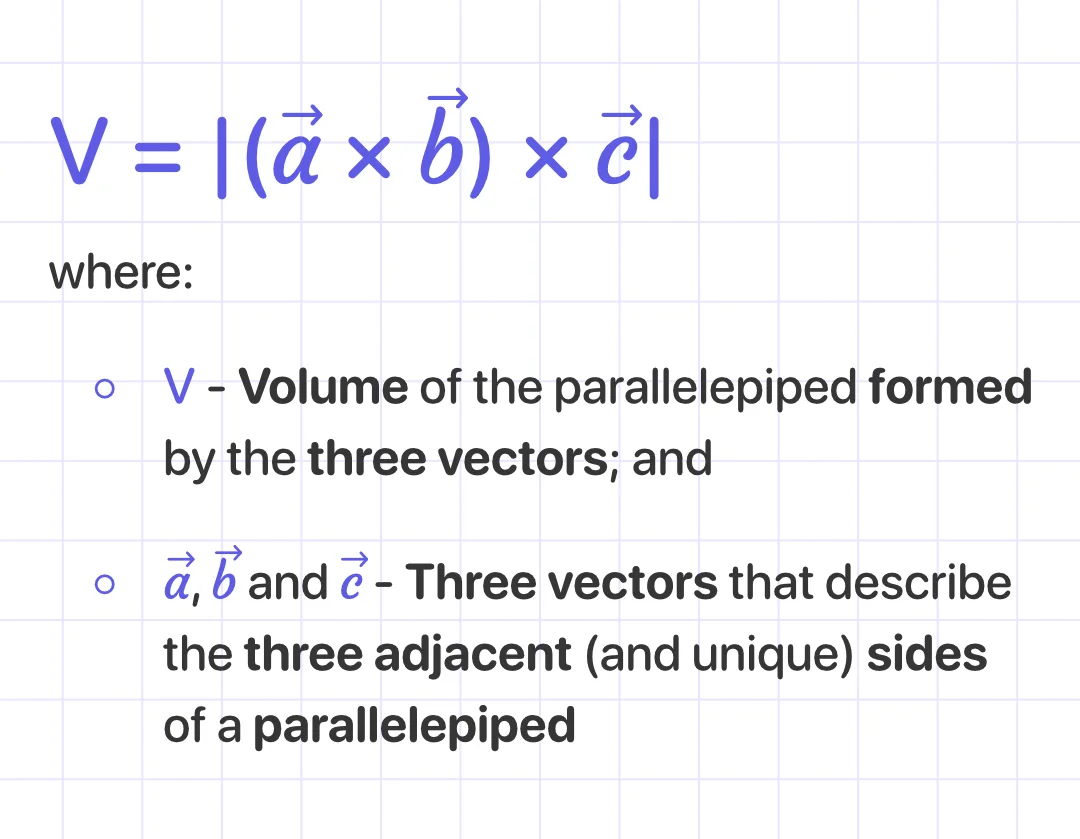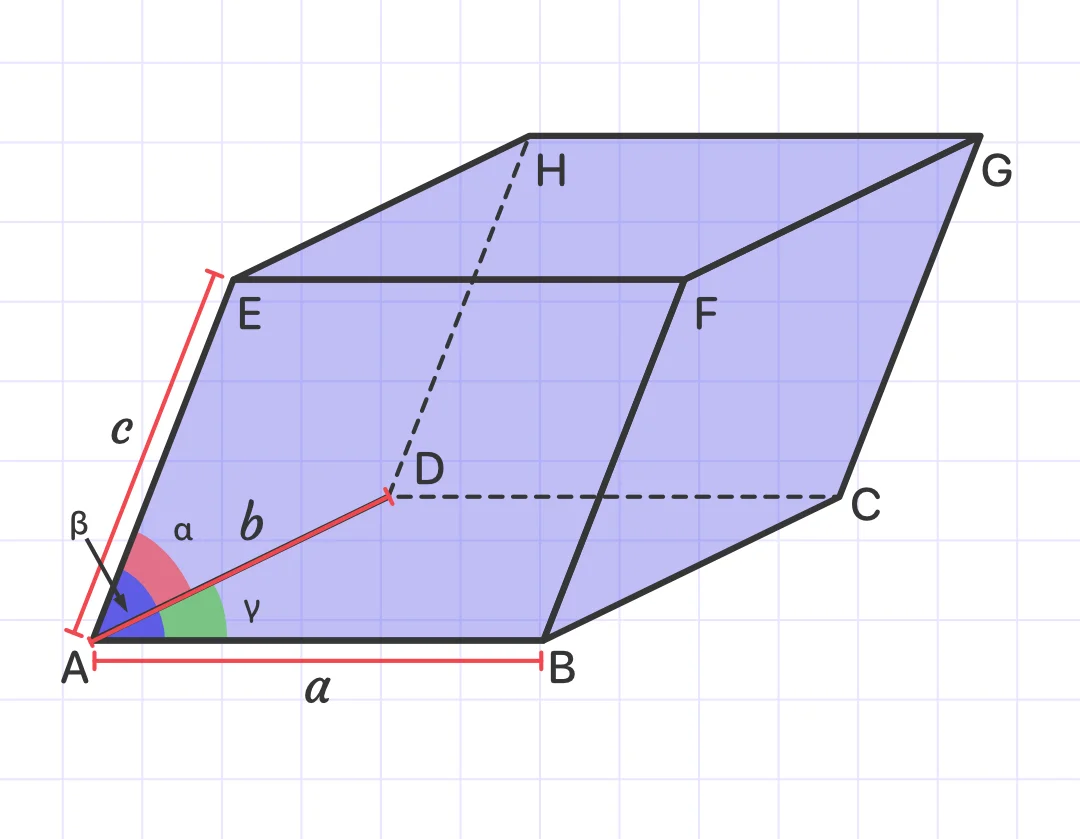MathMaster Blog
The space occupied by a parallelepiped in a three-dimensional plane is defined as its volume. It is expressed in cubic units, like in^3, cm^3, m^3, ft^3, yd^3, etc. The formula for the volume of a parallelepiped is given by:

To calculate the volume of a parallelepiped from its sides (or edge lengths), use the formula:
V = a x b x c x √(1 + 2 x cos(α) x cos(β) x cos(γ) - cos²(α) - cos²(β) - cos²(γ))

Example 1:
Determine the volume of the parallelepiped based on the vectors:

Solution:
Step 1:
Take the cross product of b and c.

Step 2:
Take the dot product of

Answer: The volume of the parallelepiped is 11.
Example 2:
A rectangular box has a volume of 10x^2 and a length of 3x and a width of 2x. What is the height of the box?
Solution:
Input the volume, length, and width into the following formula to get the volume of a box:
V = l x ω x h
10x^2 = (2x)(3x)h
10x^2 = 6x^2h
Then, divide both sides by 6x^2:
10/6 = h(5/3) = h
Answer: The height of the box is 5/3.